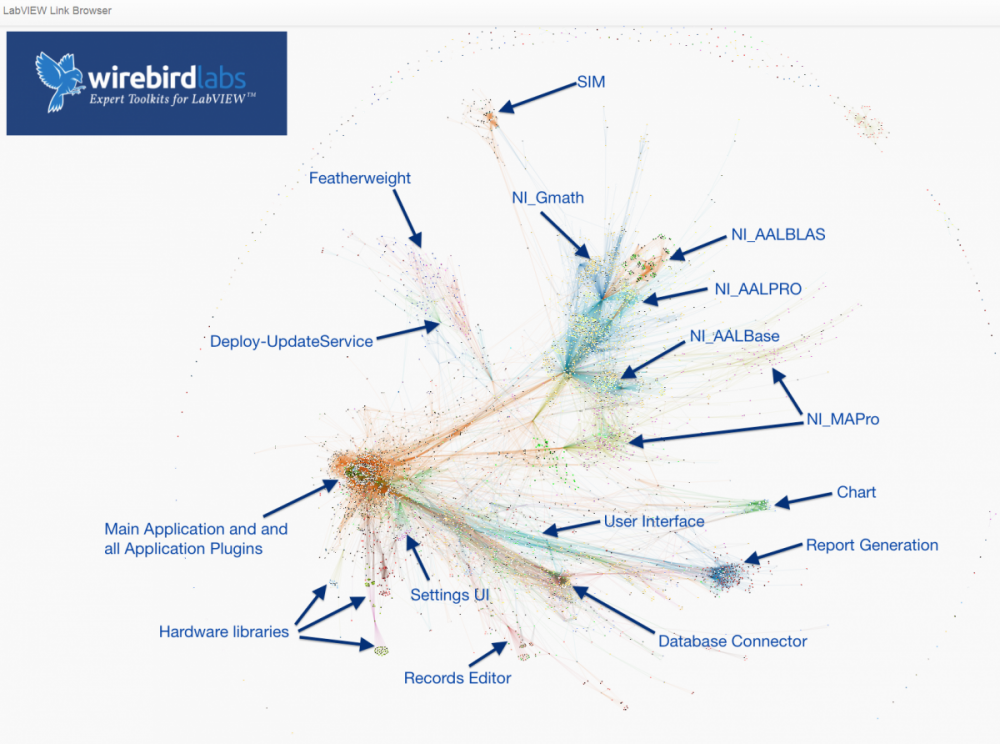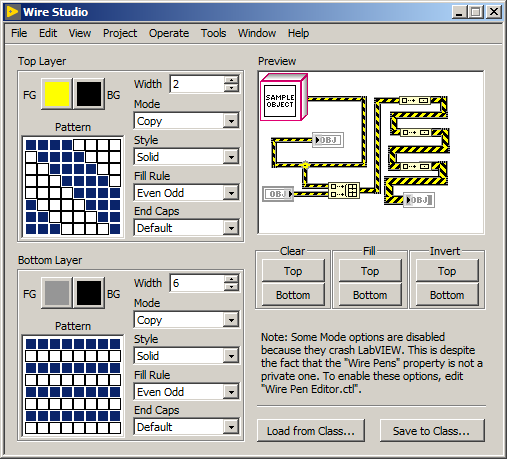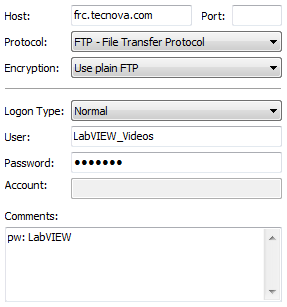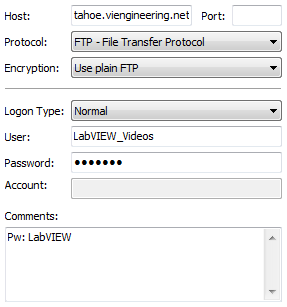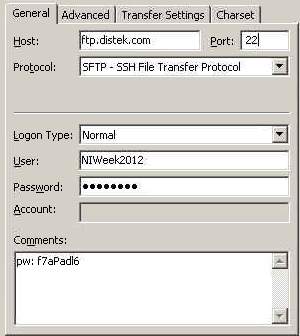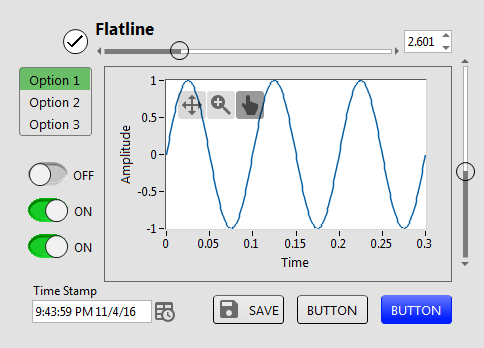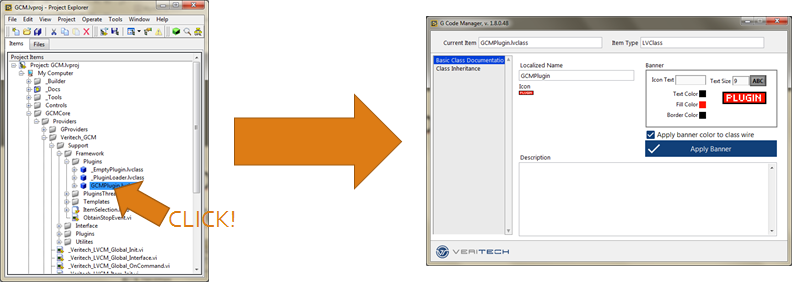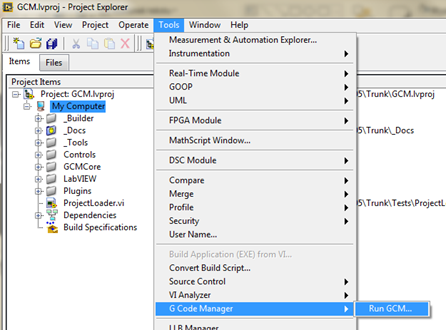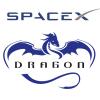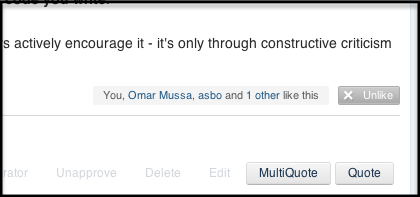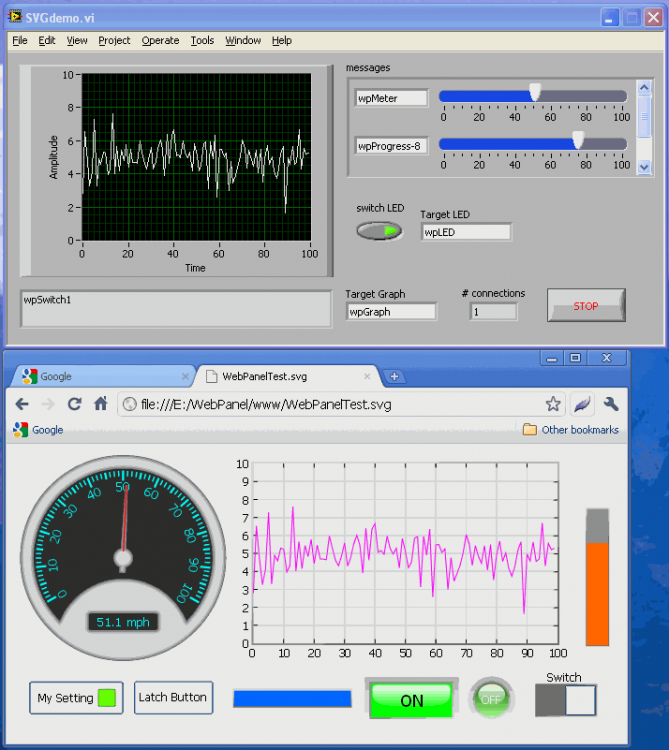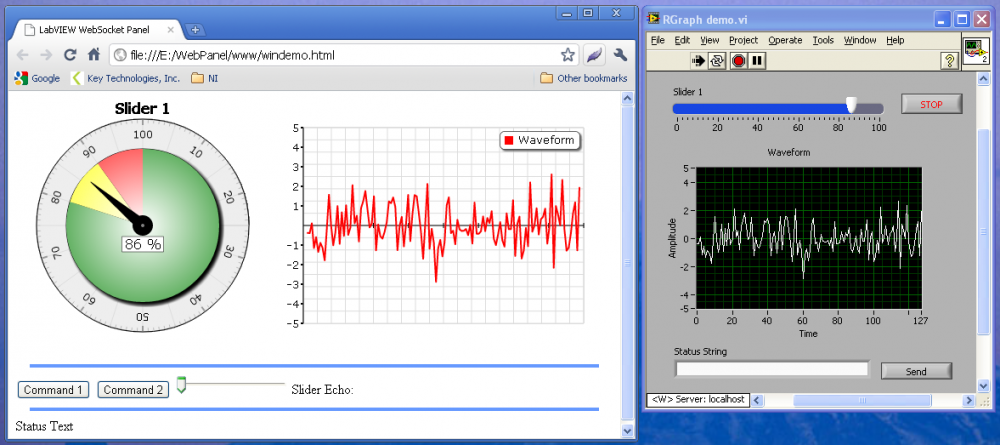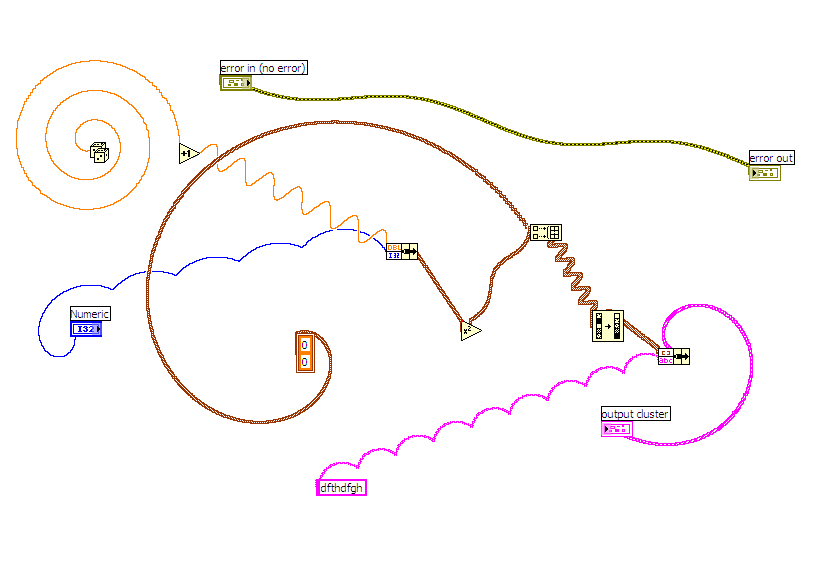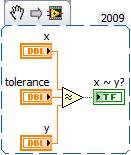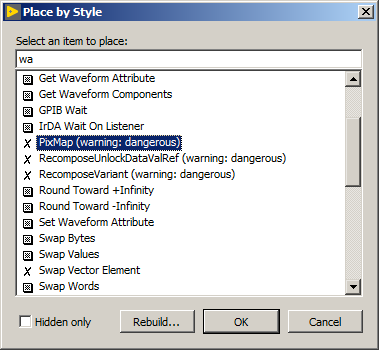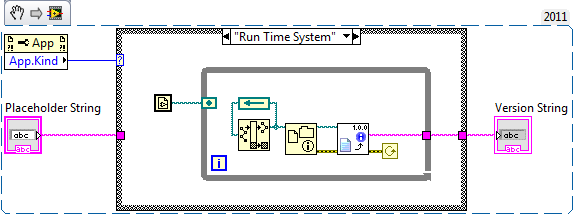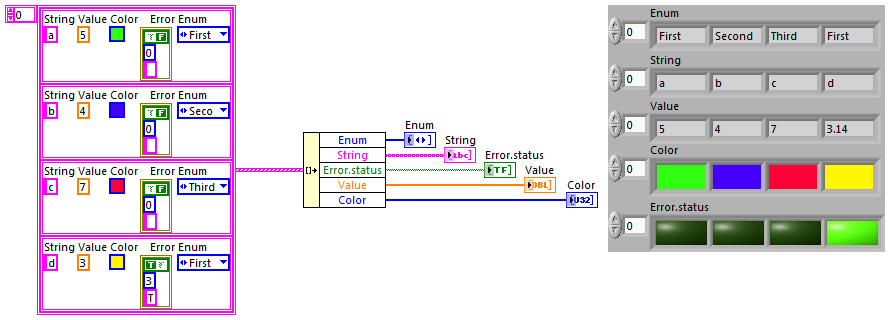Leaderboard
Popular Content
Showing content with the highest reputation since 06/29/2009 in all areas
-
After I made this post I decided to bring the LabVIEW Wiki back online. It was not easy and took several days of server upgrades and hacking. The good news is I was able to bring up all the original pages.. The even better news is I talked with @The Q and @hooovahh and we are all on the same page as to how to move forward. @The Q did a great job of stepping forward and trying to fill the void that the LabVIEW Wiki's absence had left. He's agreed to migrate all the new content he created over to the LabVIEW Wiki, from Fandom and continue to develop new articles and content moving forward on the new site. He will also help in moderating the Wiki and will be promoted to Admin rights on the Wiki. His help is much appreciated. The LabVIEW landing page created here on LAVA is awesome but the forums don't lend themselves to static content creation. Instead @hooovahh has agreed to move the old landing page to here. That will be the new home for the landing page. This will become a valuable resource for the community and I hope all of you start pointing new people in that direction. With many editors, it can only get better and better over time. Where do we go from here: Logging in. - The old accounts are still there. If you're a LAVA old-timer, then you can try to login using your LAVA username. If the password doesn't work then reset it. You can also create a new account here. I'm going to announce a day when new accounts can be created. I'm limiting it for now because of all the spam accounts that can be potentially created. There's an issue with the current Captcha system. if you are super-eager to start creating content now and want to help, send me a direct message on LAVA and I can manually create an account right away. - New account creation is now open. Permitted content: - I'm not going to put restrictions on content at the moment. Obvious vandalism or offensive\illegal content will not be tolerated of course. However, the guidelines will be adjusted as time goes on and new content is created. There's just not enough content right now to be overly concerned about this. We need content. Discussions about the Wiki. - Each article page has an associated discussions page where you can discuss issues related to that article. Please use that mechanism (same etiquette as wikipedia). General Wiki issues\questions and high level discussions can be done here. So now, if you need to add content, you can do it yourself. Feedback as always is welcome.20 points
-
The content on this page will go away soon. It's currently being migrated. > New Location < Read about the wiki here This thread is intended to be a place for all things LabVIEW to be able to be found. If you have a resource for LabVIEW feel free to reply with your own content. We are interested in things like person blogs, forums, training information, and anything a user of LabVIEW might want. Several links and sections have been lifted from another resource available over on NI labeled the Content and Communities for LabVIEW Application Development. I'm New To LabVIEW and Need Help Basic Training Information NI Learning Center NI Getting Started -Hardware Basics -MyRIO Project Essentials Guide (lots of good simple circuits with links to youtube demonstrations) -LabVEW Basics -DAQ Application Tutorials -cRIO Developer's Guide Learn NI Training Resource Videos 3 Hour LabVIEW Introduction (Alternate Google Drive) 6 Hour LabVIEW Introduction (Google Drive) Self Paced training for students Self Paced training beginner to advanced, SSP Required Rookie Mistakes in LabVIEW by Digilent State Machine Design Pattern Basic Tutorial Wikipedia Article Sixclear Video Event Driven Design by NI Beyond Basic Training These are topics that are useful but not for those new to LabVIEW or software development. Topics may cover things a novice may have a hard time following. Object Oriented Software Design NI FAQ on Object Oriented Programming Creating Classes When Should you Use Classes Abstraction Abstraction Distraction Introduction to Object Oriented Programming and HAL by Elijah Kerry (Video), Plugin Framework JKI Hardware Abstraction Video Actor Framework Community Introduction Framework Basics Error Handling Basics by NI David Maidman’s Blog Post SOLID Error Handling by Dmitry Structured Error Handler Express VI by NI I Have Questions LAVA Forums - Independent community, with less NI oversight, and generally less new users asking basic questions NI Official Forums - NI's official forum, monitored semi-regularly by NI and the best place to find official support LabVIEW on Reddit - Smaller community but has Reddit features like voting on posts and comments causing interesting topics to get more attention LabVIEW on Stack Overflow - Q&A style community I'm Looking to Find Example Code and Toolkits NI Tools Network - Polished released code distributed as VIPM packages. LAVA Code Repository - Place for Verified, and Unverified code allowing for discussions, in addition to hosting NI Code Exchange / Community Documents - Similar to LAVA but NI's site licensing means less flexibility if you are posting code and want a custom license. NI Reference Designs Portal GitHub - Trending LabVIEW Projects, and All LabVIEW Projects GitLab - LabVIEW Projects BitBucket - LAVA Projects on BitBucket I'm Looking for Blogs There are lots of LabVIEW blogs, covering lots of topics. Some blogs go cold after some time, so below is a table of blogs, highlighting the last post made. At the moment this is updated manually so this will need to be updated periodically. NI's Blog NI's official blog, updated very frequently System Automation Solutions 10/24/2018 Sam Taggart's Blog JKI Blog 9/13/2018 Blog often highlighting JKI's activity including VIPM and other LabVIEW tips DMC Blog - 9/10/2018 LabVIEW category of DMC's official blog Steve Watts Random Ramblings on LabVIEW Design - 10/23/2018 Random Ramblings says it all but often good insight into designs and discussions we don't think about but should question why we use them and how Delacor Blog - 9/4/2018 The Daily CLAD - 9/4/2018 Hooovahh's Blog - 8/24/2018 Brian Hoover's blog focusing on LabVIEW and CAN The LabVIEW Lab - 10/22/2018 Eric Maussion's blog Bloomy's Blog - 8/13/2018 LabVIEW category of Bloomy's official blog Ajay Blog - 10/10/2018 Ajayvignesh's LabVIEW blog Wiresmith - 9/25/2018 James McNally's Blog LabVIEW Craftsmen - 7/3/2018 Wineman Technology Blog - 10/10/2018 LabVIEW category of Wineman's official blog MGI Blog - 6/5/2018 Moore Good Ideas blog Eyes on VIs - 5/25/2018 Christina Rogers blog often focusing on LabVIEW's visual design UI's and UX's QControls - 5/15/2018 Blog series on QControls, and open alternative to XControls Walking The Wires - 5/11/2018 Chirs Roebuck's Blog Not a Tame Lion - 5/5/2016 LabVIEW Artisan - 2/5/2015 Darren Nattinger's LabVIEW blog often highlighting lesser known features of LabVIEW Culverson Software's Blog - 9/20/2014 LabVIEW category of Steve Bird's Blog VI Shots - 7/31/2014 LabVIEW video podcast by Michael Aivaliotis Brian Powell - 12/26/2013 I'm Looking for Videos Similar to blogs, video channels can be hit or miss, and content can become dated. But if you are more of a visual learner these channels offer a chance to learn by watching others. NI Week & CLA Conference - Username: LabVIEW_Videos, Password: LabVIEW GDevCon Conference LabVIEW Architects Forum Delacor's Channel System Automation Solutions LLC Dr. James D Powell NI's LabVIEW Channel LabVIEW ADVANTAGE LabVIEW MakerHub Looking For Certification Help Certification Nugget: CLAD - Certified LabVIEW Associate Developer Certification Nugget: CLD - Certified LabVIEW Developer Certification Nugget: CLA - Certified LabVIEW Architect Connecting With Other LabVIEW Developers User Groups Online communities are a great way to connect and contribute. In addition to online there are Local LabVIEW User Groups which meet regularly to present and understand LabVIEW and NI topics. Find one close you you and subscribe or monitor topics. NI often supports local user groups, but they are in most cases ran and organized by the community. NI Week NI Week is another great way to connect with and learn. Hosted in Austin Texas once a year it is a week long conference with training, discussions, keynotes and other activities. Many previous NI Week videos can be found online but no single source is available which aggregates all marketing, keynotes, and technical sessions in one location. The best resource for content is a site setup for video hosting done by Mark Balla over the years. Summits If you hold a CLA or CLD there are specific summits for you that are free. These are often tailored presentations for a specific skill set with the focus on technical discussion and problem solving. There are two CLA summits, one in Austin Texas, and one in Europe both held once a year. CLD summits happen more frequently and locations change from year to year. Consult their specific discussion forums on NI to see when the next one is. Just like NI Week Mark Balla has several videos available here. Needing Professional Help If a project is getting out of hand and is beyond the skill level of your team, NI suggests looking at one of their Alliance Partners. Contact one in your area, and they will help try to best guide you on your project. I Want To Contribute to the Community Developing Code For Others Arguably the most difficult thing about sharing code, and reusing code, is the mind set and considerations associated with other developers using software you wrote. It is a type of mental exercise where you need to put yourself in the mind of the developer using your software. NI's Reference Deign Portal is a good resource for understanding various coding structures, and best practices for designing code for others, and can help with standardizing code for other developers. TBD (Expect this to be a section on various forums, and code repositories that can be added to along with helping out local user groups, and presenting at NI Week and Summits) Other Important Software Topics Source Code Control (SCC) Recommended SCC for LabVIEW Software Configuration by NI Code Management at Center of Excellence VisualSVN - Free SVN Server Software Delacor Blog with SCC Category -SVN Setup for LabVIEW By Delacor (Video) -Git Setup for LabVIEW By Delacor (Video) SOLID Principals Agile Software Development Principles, Patterns, and Practices (book) How Applying Agile Object-Oriented Design Principles Changes Designs and Code by Dmitry SMoReS development Unit Testing NI Unit Test Group VI Analyzer (Automated Code Inspection) The VI Analyzer is a tool by NI that is included with some versions of LabVIEW and allows for automated inspection of LabVIEW software, to check for various conformity or nonconformity to software practices. The VI Analyzer comes with many useful code checking steps but others can be added. Checkout the VI Analyzer Enthusiasts for more community made tests. LabVIEW Style Checklist Center Of Excellence - Learning VI Analyzer LabVIEW Style Guide Rules to Wire By Part 1 Rules to Wire By Part 2 Virtual Machine Usage TBD16 points
-
Please see the above link to download the videos The NIWeek 2016 Videos are uploaded to the ftp server. Please see this link for information on downloading the videos. https://lavag.org/topic/19154-ni-week-2015-videos/#comment-11544416 points
-
I just discovered by accident that if you copy a primitive VI (like add) then edit the icon of a VI and paste , you get the icon of the primitive? I am sure a lot of you already knew this, but I thought I would share, because it was a nice surprise to me. Now it will be easier to create new icons. Fab15 points
-
14 points
-
The NIWeek 2015, 2016, 2017 Videos are compressed and ready for down load from Tecnova's ftp server I would strongly recommend using an ftp client to transfer them to your computer. A web browser may work but if you want to download multiple videos the ftp client makes things much easier. My ftp client of choice is FileZilla and it is free. FileZilla can be downloaded at http://filezilla-project.org/ If you are unfamiliar with FileZilla there is a youtube tutorial video found ftp://frc.tecnova.com login: LabVIEW_Videos pw: LabVIEW login and password is case sensitive. if you are using Filezilla your site manager window will look like this. Please Let me know if you find any issues with the videos13 points
-
LLBs and LVLibs solve different problems (and create different problems), and are not interchangeable or really related beyond sharing the word "library" in their acronyms. Here are some characteristics and comparisons of the two: LLB provides physical packaging containment of members, and does not address namespacing (nor scoping). LVLIB provides namespace containment of members (and also scoping), and does not address physical packaging. Both LLB and LVLIB impose static linkages that can be incidental and undesirable. These negatively affect load times (IDE and run-time), build times, and compile times. Anecdotally, it's greater than O(n) time complexity, especially when circular linkages exist between multiple such hierarchies, and most especially if the library hierarchy is nested (e.g., LVCLASS within an LVLIB, or nested LVLIBs) An LVLIB can be built into an LVLIBP. An LVLIBP is different from an LLB in that an LLB packs writeable, cross-platform* VIs capable of mutating to future LabVIEW versions, while an LVLIBP is a read-only, platform- and version-specific byte code distributable (which may contain the block diagram for debugging, except still remaining platform- and version-specific). An LLB may be used to pack libraries/plugins for deployment as application plugins, or as reusable libraries in development. An LVLIBP effectively is only used for the former. Neither LVLIBP nor LLB can pack non-LabVIEW-source filetypes as resources. Be mindful to account for both renaming/name-mangling resources, and also changes in relative path. LVLIBs (and LVLIBPs) render nicely in the LVProj tree, while LLB members appear indistinguishable from POVIs (plain ol' VIs). LLBs cannot pack two VIs of the same filename. This prevents packaging multiple LVCLASS hierarchies that use dynamic dispatch methods. This represents a few LabVIEW design limitations: 1) LLB's lack of an internal directory hierarchy for organization and packing of two filenames, and 2) LVCLASS using OS filename as the only unique identifier for method identification in a class (filename represents a good default value, but we need one more degree of indirection as a field within the LVClass XML; it's another discussion why this is so highly desirable to decouple source from OS convention). For actively-developed libraries, LLBs are bad because they exist a monolithic binary file. LVLIBs are bad because there exists no diffing or merging capabilities (this also applies to LVPROJ, LVCLASS, XCTL, XNODE filetypes. This is especially insidious, because popular DVCS clients autodetect the file format as XML and think "Aw yeah dude, I got this!" MERGE FAIL. Corrupted source. Be sure to turn off this autodetection for these filetypes.) LVLIBs can apply icon overlays to members. LVLIBs may be carefully designed to include strategic static linkages, including non-LabVIEW source files. This is one strategy to avoid managing the "Always Include" section of AppBuilder for distributables, especially as a convenience for end-user-developers of re-use libraries. But this fails by default because of the setting "Remove unused members of project libraries". Unchecking that often causes failure to build for non-trivial-sized applications linking to gargantuan LVLIBs shipping in vi.lib and as add-ons. So, the strategy may or may not work (it's coupled to whether or not you're keenly aware of and properly managing all application static dependencies) The reason I want to like LLBs is their ability to provide packaging constructs that provide higher performance on actual hardware. It's faster to load 1 file of size 100 units than 100 files of size 1 unit. It's also a more convenient distribution format -- a single file. (Also, I can't think of another language that effectively enforces a 1:1 relationship between method and physical file. LabVIEW requires substantially more clerical work to develop and refactor, for this reason) The reason I want to like LVLIBs is to enable namespacing and scoping beyond the LVCLASS level. Though, this namespacing always comes with the cost of static linking, which is perhaps the #1 problem for codebases of non-trivial size (do you see busy cursors while editing and wiring? long build times? load times? type prop errors? corruptions from application refactoring? heartache and heartburn generally?) Also, LVLIBP is neat in practice, but so narrowly scoped to specific deployment scenarios where it's acceptable to target version- and platform-specfic targets (version-specificity is definitely the bigger problem. every 12mo, we are afforded the opportunity to choose between obsolecense/migration/revalidation or just-plain-outdatedness). And without arbitrary namespace composition (namespace B and namespace C may both declare using namespace A; with namespace A unaware and none-the-wiser), it's not necessarily a compelling feature to begin with. (Corollary: an LVCLASS's ability to namespace and scope its members is desirable and good; but it becomes less necessary and more-likely-incorrect to continue namespacing and scoping at higher abstraction levels without namespace composition) Do LVLIBs Scale? Using LVLIBs in source on an actively-developed project raises barriers to both team scale and application scale. The cost of not using them is loss of scoping, which is avoided through communication and convention, and easily-detected if any actual problem were to exist. Another cost is loss of namespace, easily avoided through filenaming conventions (which is incidentally an industry standard on the web; prefixing library APIs with library-specific prefixes to avoid collision). Said another way, ROI diminishes and reverses to negative at scale, and opportunity cost has simple workarounds. I choose the opportunity cost. But... LVLIBPs! Another apparent opportunity cost of avoiding LVLIB in source is the inability to have LVLIBP as a distributable. Though, if you treat build/distribution as a second toolchain from the dev toolchain, the dev source can remain unencumbered by LVLIB, which is only added as part of the build process. I have mixed feelings on ROI here, but if LVLIBP makes sense for you, consider this strategy to make your dev experience noticeably more pleasant. Here's a real-world case study. This is from a Wirebird Labs client who gave permission to release this screenshot of a bird's eye view of their application analyzed using Links. What we're looking at in the screenshot below is an application with over 8000 application VIs (not including third-party dependencies). Libraries are identified by labels. Nodes represent a source file (mostly VIs, but also including LVLIB and LVCLASS and CTL), and connections between nodes represent static links as detected by the LabVIEW linker. This is a static screenshot of the application, but while running the physics engine lays out nodes as a force diagram. The strength of the force is based on number of static links existing between nodes, and a negative force is applied to nodes with no static links. This causes nodes to form clusters in space where strong coupling exists. What is the value of analyzing the application like this? Here is a list of issues we needed to solve: It took a long time to build. This made iterating costly, both in time and morale. Oftentimes, the build failed (anecdotally, a fresh warm boot of LabVIEW helped) The IDE was painfully slow during development; the cursor continually was "waiting" during wiring operations. The way we solved both problem was simply by taking a pair of "scissors" and snipping links between nodes. The types of links that we snipped were these incidental links introduced by packaging and namespacing facilities in LabVIEW: removing LVLIBs altogether removing VIs from LLBs calling concrete instances of polymorphic VIs rather than the parent removing public type definitions and utility VIs from LVCLASSes Within a couple days, we went from "kick off a build and go grab lunch" to "kick it off and get a coffee". The application and application framework had not changed to see these improvements; just the logical and physical packaging of dependencies. (In addition to solving the main performance pain points, additional areas for architectural consideration are easily visualized; that's beyond the scope of this conversation) Without LVLIBs, how do I avoid name collisions? I prefer this filenaming convention: Project-Class-Method.vi or Application-Class-Resource-Action.vi ... or generally, LeastSpecificNamespace-...-SpecificThing-...-VerbActingOnASpecificThing.vi For instance, Deploy-UpdateService-CheckForUpdates.vi or FTW-JSON-Deserialize.xnode. The name of the owning class just drops the -Method postfix. Is it ideal? It's neither terrible nor great. Some benefits are that filenames sort nicely, and it's easy to spot anomalous linkages. Semantic naming makes it easier for development tools outside the IDE (SCC client and provider, build toolchains). One downside is that your hand is forced on naming Dynamic Dispatch methods in classes (again, I desire to see this coupling separated by a degree of indirection in future LabVIEW versions). Conclusion? This area of LabVIEW does not have a general solution or general best practice. Be aware of tradeoffs of different strategies, and ensure they map successfully to your application space, stakeholder's needs, and team's sanity. Standing offer: Send me a message if you feel some of the scaling pain points: busy cursor while wiring build times lasting longer than 10min mass compile times lasting longer than 10min LVProj takes longer than 1min to load and within 2hrs of screensharing I reckon we could substantially improve your LV dev experience. I'm interested to further build tribal knowledge and provide feedback to NI on taking LabVIEW applications and teams to scale.13 points
-
View File Flatline Controls A set of custom controls, following the trend of a more flat UI design. Heavily influenced by Google’s Material Design, though constrained by what can be done with available tools and options in LabVIEW. Uses icons from Google Material Design. — Buttons based on the system booleans (with hover effects). Icons can be added as decals (such as from materialdesignicons.com) — Matched sets of controls for numeric/string/enum/etc., based on Silver controls, but swapping out all ‘chrome’ for simple boxes and lines. — flattened versions of switches/sliders/arrays/graphs etc. Now on the LabVIEW Tools Network JDP Science Tools group on NI.com. Submitter drjdpowell Submitted 06/13/2016 Category User Interface LabVIEW Version 2011 License Type BSD (Most common)12 points
-
I had a LabVIEW user group meeting last week talking about embedded platforms and when I got home I saw the Intel Edison collecting dust on my desk: Since it is x86, I thought I would try to deploy a Linux LabVIEW executable to the Edison and run it in the Run Time Environment. Here is what I did: 1) Install Ubilinux, based on Debian Linux, from: https://learn.sparkfun.com/tutorials/loading-debian-ubilinux-on-the-edison 2) Install xvfb, a virtual framebuffer display server (no video on this device), fluxbox display manager and x11vnc: apt-get install xvfb fluxbox x11vnc xterm 3) Install the prereqs for the LabVIEW RTE (this was already installed with the above, but good to check): apt-get install libxinerama1 libgl1-mesa-glx 4) Download the RTE and unzip it, I put it in /home as /root gets pretty full wget http://ftp.ni.com/support/softlib/labview/labview_runtime/2014/Linux/LabVIEW2014RTE_Linux.tgz tar zxvf LabVIEW2014RTE_Linux.tgz 6) the RTE is an rpm and we need deb so get alien: apt-get install alien 7) convert the rpm to deb (this takes a while): alien -k -c labview-2014-rte-14.0.0-1.i386.rpm 8) Install the RTE: dpkg -i labview-2014-rte_14.0.0_1.i386.deb 9) Install some missing fonts: apt-get install xfonts-100dpi xfonts-75dpi xfonts-scalable xfonts-cyrillic ttf-mscorefonts-installer At this point, I compiled the "UDP sender" from the examples using LabVIEW for Linux 2014 with my desktop hardcoded as the destination IP address. I copied the executable over to the Edison, ran it as follows: xvfb-run ./send and a few seconds later on my desktop: I am getting UDP packets from my Edison to my host computer sent from a LabVIEW application! I was pretty excited by this. At this point, I decided that I wanted to see if I could get a GUI running. I started up a virtual display and launched fluxbox using: Xvfb -screen 0 800x600x16 -ac & DISPLAY=:0 fluxbox & And from a linux VM, I created a SSH tunnel and started a VNC connection ssh -l root -L 5900:localhost:5900 192.168.222.90 'x11vnc -localhost -display :0' vncviewer localhost I was greeted with a desktop so I launched a terminal and executed the send program. Here is the result: So there you have it, LabVIEW executables running on a headless Intel Edison with remote desktop support. Oh, and once the VI is running from the remote desktop, you are free to disconnect and reconnect without terminating the running VI. As to resource usage, I show while running everything: root@ubilinux:~# free -h total used free shared buffers cached Mem: 960M 174M 786M 0B 9.0M 100M -/+ buffers/cache: 64M 896M Swap: 0B 0B 0B htop: 1 [##** 9.6%] Tasks: 35, 12 thr; 1 running 2 [##*** 12.7%] Load average: 0.15 0.20 0.11 Mem[|||#**** 65/960MB] Uptime: 00:07:25 Swp[ 0/0MB] PID USER PRI NI VIRT RES SHR S CPU% MEM% TIME+ Command 2018 root 20 0 16132 5428 2772 S 5.0 0.6 0:19.94 x11vnc -localhost 2047 root 20 0 4380 1580 1204 R 5.0 0.2 0:00.83 htop 2033 root 20 0 120M 39620 27756 S 5.0 4.0 0:16.89 ./send 1987 root 20 0 52136 14608 5016 S 3.0 1.5 0:17.00 Xvfb -screen 0 80 2016 root 20 0 12540 6300 2436 S 0.0 0.6 0:02.85 sshd: root@notty 1 root 20 0 2200 716 616 S 0.0 0.1 0:00.81 init [2] 202 root 20 0 2540 1108 716 S 0.0 0.1 0:00.28 udevd --daemon 360 root 20 0 2536 816 428 S 0.0 0.1 0:00.01 udevd --daemon 366 root 20 0 2536 820 428 S 0.0 0.1 0:00.00 udevd --daemon 1552 root 20 0 5760 1424 1040 S 0.0 0.1 0:00.14 /sbin/wpa_supplic 1752 root 20 0 27916 1680 1116 S 0.0 0.2 0:00.17 /usr/sbin/rsyslog 1754 root 20 0 27916 1680 1116 S 0.0 0.2 0:00.01 /usr/sbin/rsyslog 1755 root 20 0 27916 1680 1116 S 0.0 0.2 0:00.01 /usr/sbin/rsyslog 1747 root 20 0 27916 1680 1116 S 0.0 0.2 0:00.23 /usr/sbin/rsyslog 1801 root 20 0 2424 608 520 S 0.0 0.1 0:00.00 /usr/sbin/udhcpd 1837 ntp 20 0 5304 2020 1572 S 0.0 0.2 0:00.11 /usr/sbin/ntpd -p F1Help F2Setup F3SearchF4FilterF5Tree F6SortByF7Nice -F8Nice +F9Kill F10Quit The VI is using about 5% CPU as well as 5% on the the VNC server and 3% on the virtual framebuffer. Here is the disk usage: root@ubilinux:~# df -h Filesystem Size Used Avail Use% Mounted on rootfs 1.4G 1.3G 78M 95% / /dev/root 1.4G 1.3G 78M 95% / devtmpfs 480M 0 480M 0% /dev tmpfs 97M 300K 96M 1% /run tmpfs 5.0M 0 5.0M 0% /run/lock tmpfs 193M 0 193M 0% /run/shm tmpfs 481M 12K 481M 1% /tmp /dev/mmcblk0p7 32M 5.3M 27M 17% /boot /dev/mmcblk0p10 1.3G 125M 1.2G 10% /home It's pretty tight, you will definitely run out if you do not do the RTE installation from /home. As to IO, I have not played much with doing anything with the IO ports, that's next on my list. I wanted to share my progress so far and get people's feedback. Thanks Jon12 points
-
OK, I finally finished a version of a document I have been promising to write. We put it on our site: OOMessagingCommandPatternStatePattern. In it we present examples of the following in LabVIEW: messaging with LabVIEW objects Command Pattern (with XML configuration files application example) State Pattern Hopefully the examples will be helpful to some readers, and promote further discussion on scalable application architectures.12 points
-
You know how you can change the wire appearance for a class in the class properties? As it turns out, LabVIEW internally allows for more flexibility than that dialog gives you. So I made an advanced wire editing tool...and unlike a lot of stuff I post, you can actually use this for serious projects, because it does not use any private/unsupported LabVIEW functionality! With this tool, you can set wire size without limits (with results similar to this), customize both wire layers with any 8x8 monochrome pattern, and also mess with different draw options. Strangely, a few of these settings seem to have no effect, and many of the options for one of them actually crash LabVIEW. (These ones are disabled in my tool, but you can re-enable them by editing a typedef.) Given that this is actually a documented, supported property that's officially supposed to work, I've reported this as a bug to NI; if any NI engineers see this and feel like investigating, you can refer to service request #7762024. Latest version: Wire Studio 2.zip Old versions: Revision 111 points
-
During my time at NI Week I decided to bring my video camera and record the presentations, Tech Theater and LAVA BBQ. Please see this link for Video downloads The IT department of my company was also kind enough to setup a ftp server so I could share them with the community It took a while to figure out how to compress the 5GB HD .mts files to a more distributable avi format but with the help of crelf I finally got them compressed and uploaded to the ftp sites. Vi Engineering and Distek Integration have also volunteered their ftp servers to help distribute the videos Thank you Chris and Ed for your help. The avi files can be downloaded from one of the 3 ftp sites they range in size from 150 to 300MB. I would strongly recomend using an ftp client to transfer them to your computer. A web browser may work but if you want to download multiple viedos the ftp client makes things much easier. To download videos from Distek they are requiring you to use an ftp client. My ftp client of choise is FileZilla and it is free. FileZilla can be downloaded at http://filezilla-project.org/ If you are unfamiliar with FileZilla there is a youtube tutorial video found here The video files are .avi and have been compressed using DivX If you player isn't able to play the videos you will need to install the free DivX codec found at http://www.divx.com/...plus/codec-pack to access the videos via Use this log in information ftp://frc.tecnova.com login: LabVIEW_Videos pw: LabVIEW login and password is case sensitive. if you are using Filezilla your site manager window will look like this. For Use this log in information ftp://tahoe.viengineering.net login: LabVIEW_Videos pw: LabVIEW login and password is case sensitive. if you are using Filezilla your site manager window will look like this. For Username: NIWeek2012 Password: f7aPadl6 Please Note: You will not be able to access the FTP through a web browser! You MUST use an FTP Software Client to access the FTP. To access the ftp.distek.com please use your FTP software client: Client FTPS settings Hostname: ftp.distek.com Port: 990 Client Settings for SFTP using ssh ftp.distek.com Port 22 if you are using Filezilla your site manager window will look like this. If you have any issues downloading the videos or you are unable to view them please post to this topic. Enjoy, and hopfully the videos will help you learn something new about LabVIEW Mark11 points
-
The NIWeek 2013 Videos are compressed and ready for down load from Tecnova's ftp server All of the videos are files and are around 400 to 450 MB for an hour presentation. I would strongly recomend using an ftp client to transfer them to your computer. A web browser may work but if you want to download multiple viedos the ftp client makes things much easier. My ftp client of choise is FileZilla and it is free. FileZilla can be downloaded at http://filezilla-project.org/ If you are unfamiliar with FileZilla there is a youtube tutorial video found here Thanks to my IT department at Tecnova for giving me the space. V I Engineering has also volunteered the ftp server to help distribute the videos. Thank you Chris for your help. Use this log in information ftp://frc.tecnova.com login: LabVIEW_Videos pw: LabVIEW login and password is case sensitive. if you are using Filezilla your site manager window will look like this. For Use this log in information ftp://tahoe.viengineering.net/LabVIEW_Videos login: LabVIEW_Videos pw: LabVIEW login and password is case sensitive. if you are using Filezilla your site manager window will look like this. I compressed and uploaded these videos in a rush and didn't have time to look through them all so if you find issues please post to this thread. Please enjoy and share the videos with anyone you can. Mark11 points
-
Hello everybody! During a few last years I received multiple appeals to release AES library that I developed in 2011 into open-source. So, I've just done exactly this: https://github.com/IgorTitov/LabVIEW-Advanced-Encryption-Standard I released it under MIT license (which means that there are no restrictions whatsoever). No VI passwords, no uglification. LabVIEWishly Yours, Igor Titov.10 points
-
Version 1.9.1
1,791 downloads
A set of custom controls, following the trend of a more flat UI design. Heavily influenced by Google’s Material Design, though constrained by what can be done with available tools and options in LabVIEW. Uses icons from Google Material Design. — Buttons based on the system booleans (with hover effects). Icons can be added as decals (such as from materialdesignicons.com) — Matched sets of controls for numeric/string/enum/etc., based on Silver controls, but swapping out all ‘chrome’ for simple boxes and lines. — flattened versions of switches/sliders/arrays/graphs etc. Now on the LabVIEW Tools Network JDP Science Tools group on NI.com.10 points -
Note: G Code Manager is now available at GitHub: https://github.com/veritechpl/gcm G Code Manager GCM is a tool that makes the properties of Project Items in Project Explorer window more accessible, removing unnecessary waiting times and modal windows. In runs in window next to the Project Explorer window and shows the items properties immediately after selecting new item in the explorer. GCM also allows you to create your own plugins to access those Project Items! Requirements The package was built in LabVIEW 2014, it should also run in LabVIEW 2015. How to start In the Project Explorer window click on the Tools menu, then select G Code Manager -> Run GCM… Download IMPORTANT NOTICE This tool was made using some internal LV APIs which are not fully tested and documented It is in very early stage when it comes to stability It may cause LV to crash! I strongly advise using source control - if you're not using one, do not even install this tool! (Above statements are really for your own good - I'm using this tool in my everyday work and I don't have any major issues. However, you might accidentaly clear your VI description or icon, or something like that, so be prepared for it by using source control like SVN or Git to revert the changes). Current Version Version 1.14.0.71 Download: veritech_labview_code_manager-1.14.0.71.vip - Added GCM settings screen - Added option to automatically open GCM with the project Older Versions Verstion 1.13.0.67 Download: veritech_labview_code_manager-1.13.0.68.vip - Interface cosmetics. Smaller window size - GCM remembers last selected plugin for the project item type - Dock button added, which makes GCM window always on front - Added support for build specifications: EXE, Installer, RT Exe, FPGA - Added VI Window Properties plugin (beta) - Added VI Execution Properties plugin (beta) Version 1.11.0.61 veritech_labview_code_manager-1.11.0.61.vip - Icon Editor: Added "Default Font Settings" which sets the font to 8 pt, centered, capitalized. - Fixed the synchronization issue between plugins (icon edited in Icon Editor was not updated in Basic Documentation). - Added new incoming events for plugins to better handle items selection/deselection and plugin activation/deactivation (see the attached documentation) Note: The plugins API was changed in this version. If you've made your plugin in previous versions, please refer to the updated documentation. If you have any problems, just contact me Documentation: GCM.pdf Version 1.10.0.58 veritech_labview_code_manager-1.10.0.58.vip - Added Icon Editor for VIs, which currently allows editing the icon text or clearing the icon completely Documentation: GCM.pdf Version 1.9.0.54 veritech_labview_code_manager-1.9.0.54.vip See this document for more information: GCM.pdf10 points
-
Please see this link for Video downloads The NIWeek 2017 Videos are uploaded to the ftp server. Please see this link for information on downloading the videos. https://lavag.org/topic/19154-ni-week-2015-videos/#comment-11544410 points
-
I want to let LAVA know about a feature of LV 2016 that may not get much press. The In-Place Element structure has a new pair of border nodes to let you access the attributes of a variant without copying them out of the variant. This will VASTLY improve the performance of tools that use variant attributes as lookup tables. I strongly encourage everyone who works on this to look at the shipping example: labview\examples\Performance\Variant Attribute Lookup Table\10 points
-
Neil, I've found this procedure to fix this problem, and a host of other issues with source/object code asynchronization: Ensure you have no outstanding changes in your working copy; everything is committed to the repo Ensure for multi-developer teams you effectively have a mutex on the entire repo; you're likely about to make a widespread commit that touches lots of source. It's especially imporatant to have no outstanding changes on .lvclass, .ctl, .xctl, .lvlib, .xnode, or .lvproj files, because these cannot be readily diffed or merged in LabVIEW. (Perhaps a good time to do this is on the weekend, where all team members know to have changes committed before then.) Shut down LabVIEW completely Open all classes in XML Editor (on windows, Notepad++ is good, associating lvclass files as XML in the Style Configurator) Find the <Property> tag for "NI.LVClass.Geneology". Delete this entire tag. This removes any stale mutation history. **Careful here!** The entire tag is likely to span 9 lines. Be sure to delete them all. (I've not yet found or developed a reliable API for this operation; lemme know if one exists.) Find the <Property> tag for "NI.Lib.Version" -- reset this to the value 1.0.0.0 Open LabVIEW to the Getting Started Window; "Tools >> Advanced >> Clear Compiled Object Cache ..." then clear the cache for both User and App Builder Shut down LabVIEW completely Open the project and offending VIs to see if this fixes things. Maybe so, but you're not done yet. If you have not done this yet, ensure every single source file is marked as source-only (e.g., not a unifile). Right-click the root node of the project, "Properties" menu item, "Project" config page Ensure "Separate Compiled Code from new project items" is checked "Mark Existing Items..." button, select all items in the tree, then "Mark Selected Items". Wait for the operation to complete, then close this dialog. Open this dialog once more; visually scan the entire list, ensuring all statuses are "marked" Right click on the root node and "Find Missing Items". Resolve these bad linkages, probably by just deleting them from the project. If you have not done this yet, find all diagram disable structures in your project (this is simple if all VIs are in LVClasses -- since all VIs are in memory -- or with the legacy VI Tree hack). One way or another, ensure all VIs are in memory, find all disable structures, and analyze the disabled cases for links to missing VIs. Do that again for Conditional Disable Structures. Mass compile the project (from right click context menu from root node of project tree) Might as well take the opportunity to fix all the errors that are returned by the mass compile. If you have insanities, search the phrase "labview heap peek insane" for instructions how to fix these. If you can't get the keyboard commands for heap peek to work (e.g., if you're developing in a VM), there exists an undocumented VI Server App method to toggle heap peek visibility. Shut down LabVIEW completely Goto Step 7; rinse and repeat until zero errors are returned Ensure the application still runs from source; e.g., you've not accidentally broken something. If this smoke test passes, commit all changes to your local repo. This is your first checkpoint. Goto Step 7, and follow all steps again back to here. If some source files have been modified (e.g., there exist modifications in your working copy), this means will probably benefit from cross-link and circular-link tips below. Especially, if during the mass compile, you see the dialog repeating what appears to be the exact same operation over, and over, and over, and over, and over, and over, and over, and over ... Try implementing the tips below. Goto Step 7 Goto Step 3, and follow all steps again back to here. You should be able to complete this entire process with zero modifications to the codebase. Commit changes to local repo. Goto Step 3, and follow all steps again back to here. If you're happy, push to central repository. Have all developers/contributors clear their compile object caches. No really; witness that operation. It's vital. Have all developers pull the project. Ensure no corruptions exist; ensure the project can be opened and closed immediately with no "dirty dots". If these dots exist, your environments are somehow different (different versions of LabVIEW?), and should probably be resolved. I've tried to codify this procedure accurately above, but drop a line if it doesn't work or correct it with a response to this thread. Tips for the future to avoid these problems (from extensive at-scale experience with LVOOP spanning LV2009-2013SP1f2+): Refactor to avoid all typedef'd clusters in Class Private Data definitions. If they must exist, ensure that if they ever recompile, all LVClasses linking to the type are also saved to disk, especially if it's just one of those 'recompiles' that we've conditioned ourselves to ignoreOne overlooked place that typedef'd clusters can hide is as sub-types to some native labview objects, such as Queues, Events, etc... Avoid type defining primitive types such as strings/numerics/bools (You:"but..." me: "I know, me too. But it is what it is.") If you are using reference types (e.g., .NET) as elements in your class private data, you may run into unique issues that require other resolutions. One resolution is storing the reference as a flattened type, then creating accessors that cast to/fro the desired type. (Avoid even having elements in your class private data. Statelessness and immutability are desirable anyway for a functional style and synchronous dataflow.) When refactoring and changing the scope of types, ensure that both owning library files (lvclass, lvlib, xnode, xctl) are saved to disk. Else, corruption, sometimes tough to detect immediately, and may not even show up until build-time. Usage of LVOOP property nodes voids the warranty of LabVIEW altogether for applications of non-trivial scale. Don't use them in any version up to the time of writing, 2013SP1f2+ (You:"but..." me: "Good luck with that") Avoid circular linkages between classes. It's not uncommon for the type-propper to give up recursing if too many circular linkages exist, sometimes ending in a "VI failed to compile" error.To analyze these linkages, open classes one-by-one in an empty project. Inspect the "Dependencies". Click on classes/libraries and say "Why is this item in Dependencies?" to highlight the static link. Though, on codebases that have hidden corruption, this feature crashes LabVIEW -- instead, "Find Callers", which is slightly less convenient because it may highlight other Dependencies. To fix the dependency vector, refactor. Strictly avoid nesting of lvclasses within lvlibs; consider avoiding lvlibs altogether. The problems they can cause (edit/build/load/run-time performance, accidental corruption) are typically not worth the benefits (scoping/namespacing, common icon, LVProj loading members for API convenience...) (This is one key offender for the "endless" loops while mass compiling, and can drastically degrade edit/build/load/run-time performance.) Avoid polymorphic VIs; these "convenience" wrappers are just overloaded functions that carry static linkages to stuff you don't need to be linked to. (This is one key offender for the "endless" loops while mass compiling.) XNodes are a better alternative, but quite tricky to develop. The moment you or a developer colleague says to the other "i'm not seeing that in my environment", clear both your compiled object caches and re-start whatever you were first talking about. (Mass compiling is not sufficient, since the cache is not always invalidated when it should be, but this has gotten steadily better from 2009-2013) To sum up; avoid static linkages, and ensure dependency vectors between all code modules are unidirectional and don't form cycles. For multi-developer teams and/or codebases of non-trivial size; may the force be with you. And may you have an experienced colleague or consultant periodically auditing and transparently fixing the codebase to keep all productive and healthy and happy. Open offer: if you've ended up on this thread at your wit's end, send me a message and let's screenshare and fix it.10 points
-
How about adding a captcha to the "create lavag account" that shows a LV BD and asks a CLAD-type question?10 points
-
Here are the VIs we use for Windows authentication and domain groups. Validate Username and Password.vi takes the username and password and returns a TRUE if it validates against the domain controller. User in Group.vi takes a username (or current user if left blank) and a Domain Group name and returns TRUE if the user is a member. User Groups.vi takes a username (or current user if left blank) and returns an array of Domain Groups to which the user belongs. We only use these on our internal network, so I can't guarantee they work in every situation. Still, they may give you a starting point if you need something similar. Pat P.S. LabVIEW 2010sp1 User Groups.vi User in Group.vi Validate Username and Password.vi10 points
-
I've decided to try a new improvement on the LAVA reputation system. You can still give positive reputation points to individual posts. This has not changed, however now It is called a "Like" and your name shows below the post to indicate you like it. I think this is a better way to show support and encouragement to a user's post and increases networking between community members. I "like" it!10 points
-
Name: lvODE Submitter: vugie Submitted: 03 Nov 2010 File Updated: 02 Mar 2011 Category: General LabVIEW Version: 2009 License Type: Creative Commons Attribution-Noncommercial-No Derivative Works 3.0 Author: Wojciech Golebiowski (vugie), w_golebiowski at tlen dot pl Name: lvODE Type: Library LabVIEW Version: 2009 Description lvODE is a set wrappers, an interface to ODE (Open Dynamics Engine) library written in C and used to simulate dynamics of rigid body systems, including interactivity and in real time. In the present state lvODE allows you to use almost the full functionality of ODE in the LabVIEW environment using object-oriented programming (LVOOP). Such simulations may be used, among others, for programming the control systems of robots and manipulators (as well as in the control systems themselves, i.e. for trajectory planning), for development and testing of artificial intelligence systems, for modeling of complex mechanisms and other physical systems, etc. lvODE is not a strict set of ODE wrappers. Although it uses the same concepts, the same terminology and most of the ODE functions are reflected, many of them have been grouped, data structures have been simplified, all in a user-friendly manner and taking into account specifics of LabVIEW environment. There are also few features not present in the original library which greatly facilitate programming – i.e. Object Manager. Further extensions (i.e. 3D Picture Control integration) are planned. Short preview movie: Briefly about the ODE ODE is a free and widely-known library designed to simulate systems of rigid bodies. The programmer defines the layout of bodies, their physical parameters and types of connections between them, the role of the library is to calculate the forces acting in the system and to determine position and velocity of all bodies in the next time step, while satisfying all defined relationships. Programmer is able to interfere in simulation in full range while it goes on. It allows for the accurate analysis of its results (access to all the physical parameters) as well as programming any degree of interactivity. ODE is designed specifically to perform real time simulations – it uses a first order integrator (the procedure to solve a system of differential equations), which is a compromise between speed and accuracy. Results generated are not as accurate as they would be using higher-order integrators, but it is stable, fast and flexible. The basic features of ODE include: Rigid body with arbitrary mass distribution Types of kinematic pairs (joints, constraints): ball, slider, hinge, suspension, universal (Cardan), linear and rotary actuators, contact, and combinations that are already listed Types of geometry used for collision detection: sphere, cube, cylinder, capsule, plane, ray, any shape in the form of triangle mesh, convex, heightfield Three types of spaces for fast collision finding Equations of motion derived using Lagrange multipliers Choice of integration method: the "full" method – slower, but more accurate, and quick iterative method An advanced model of contact and friction Installation The contents of the archive folder ("lvODE") should be extracted to directory \user.lib. After restarting LabVIEW the sub-palette "lvODE" appears in the User Libraries section, where all the necessary functions may be found. Or use the VIPM package. Documentation The documentation is located in the subdirectory 'doc' and it consists of the following files: ODE Manual.pdf - The original guide to the ODE. At least brief knowledge of it is necessary to understand the main concepts and mechanisms of library. Due to the use of the same terminology, it can also be a sufficient source to use the lvODE. The main difference from the original is the simplified naming convention. lvODE Class Hierarchy.pdf - graphical representation of a lvODE class hierarchy of classes library - not necessary to start programming, but it may help to understand certain concepts. lvODE Function Reference.pdf - a list of all public lvODE functions with descriptions and organized by class. Descriptions of the functions derive much of the original ODE manual, however, cover all the differences of the conventions and LabVIEW specifics. This document is definitely to be polished (better grouping, more detailed descriptions of each section, etc.) Files *. png - map of all pallets An integral part of the documentation are also descriptions in of context help for each VI. In large part they fit the descriptions in the file "lvODE Function Reference". Private functions are documented as well. Examples Example applications are located in "examples" subdirectory. There are few examples with varying degree of complexity, and with comprehensive comments in the code. These examples, supported by context help and (in difficult cases), reading a few chapters of the original manual should be sufficient to start programming in lvODE. Comments lvODE is not a finished project. Once the ODE itself is still being developed, second, not whole its functionality is currently implemented in lvODE. The major differences include: no support for trimesh, heighfield and convex geometries, the lack of a 2D Plane constraint, lack of gyroscopic mode for the bodies, single precision floating point numbers only. Few words about licensing. I publish lvODE under such a restrictive license (see below), because this is still experimental phase. I’ll appreciate any feedback which could help to make this library better and more stable. My further plans are to provide less restrictive free version and full-featured commercial one. Please contact me if you are interested. Comments on this approach are also appreciated. Version History v0.1.0: Initial release of the code. Support If you have any problems with this code or want to suggest features: please go to lavag.org and Navigate to LAVA > Resources > Code Repository (Certified) and search for the "lvODE" support page. License This work is published under the Creative Commons BY-NC-ND license (description and text of the license here and in license.txt) ODE library is distributed under BSD license (www.ode.org) Copyright © 2010, Wojciech Golebiowski Click here to download this file9 points
-
Hi, I figured people here may be more interested in this project. I have some cool graph extensions I'm building in an open source project, which make some nice graphical overlays for XY graphs and waveform graphs in LabVIEW. I've got a github page where you can grab the code, support the project or just have a look at some of the same screenshots. Everything updates live in the graph, so you really need to see it, to get how it all works, so here you go: https://github.com/unipsycho/Graph-Extensions-LabVIEW Please star follow the project if you want to see this developed and I'd appreciate any feedback or ideas to extend it further. The markers are very much IN development right now, so no where near finished, but the tools can still be seen working. THANKS!9 points
-
he information formally listed in this thread is no longer valid. The site is now offline. All the videos have been moved to dedicated event pages on the LabVIEW Wiki. https://labviewwiki.org/wiki/Events - LabVIEW Wiki https://www.youtube.com/channel/UCUiBucUImKZERoTzaOtHB5g/featured - Youtube Channel9 points
-
I normally don't post on LAVA, but lately I have been experimenting with the WebSocket protocol, ecmascript, and the SVG DOM for creating animated browser displays with data streamed from LabVIEW. The technique is surprisingly simple. All you have to do is create a script to change the attributes of the SVG elements using the Document Object Model. The WebSocket protocol has a built in message event handler that allows you to create your own script function which executes when messages are received. The browser connects to the socket server and sends a handshake when you create the WebSocket object in script. All you need do is put a TCP/IP listerner in your diagram and return this handshake as described in the wikipedia article on WebSockets. Once the connection is made, you can stream bidirectional data between your LabVIEW application and any bleeding edge browser (Firefox 4, Chrome 9, Safari, IE9?). You can use the DOM to set the transform attributes of SVG elements using the streamed info (rotate, scale, set heigh, width, line points, etc.). Now that we can all design our own GUI objects using Inkscape (free), I suggest a concerted effor to develop a standard SVG format, streaming protocol (based on WebSockets) and open-source script library. The very best thing about this is that it is all FREE, and runs on any platform that has an HTML5/SVG/WebSockets supporting browser (I'm keeping my fingers crossed for the next firmware revision of the Nintendo DSi), and requires NO PLUGINS. So all you folks with iOS and Android who feel left out by the WebUI Builder, or those of us who are infurated by it's $1500/yr price tag (after spending $ on LabVIEW RT/FPGA), Cheer Up! Here are some screenshots of my efforts. The files are opened in the OS, but will also work when served by the old-fashioned "non-webservices" LV web server (you gotta add an SVG mime type to the mime-types file). You can also use RGraph Library and the HTML <canvas> tag if you want to implement a non-SVG browser solution. The library is free for non-commercial use. I suggest a community effort the create the standard SVG formats for UI elements, and a free, open-source ecmascript library for handling the messaging and DOM animation tasks. If there is interest, I will upload my script as a starting point, but I must warn that there is much improvement needed. sm9 points
-
Hi everyone A couple of weeks ago i had the need to put a small suite of applications i made in the tray area, but the VIs i could find to do this wasn't really very intuitive or was lacking the functions i needed. The solution? Another one of these put-your-LabVIEW-app-in-the-tray toolsets .. but this time, a little better wrapped than the example code you can find on NI's site.. ;-) (no offense) So here it is for you to evaluate .. it's not anything near final, and one can always find a number of small features lacking, but hey..it's event based, and its pretty easy to add more events if ever needed :-) Notes: Code is currently for LV8.6 and requires at least .NET Runtime 2.0, but i know for a fact that it runs on Win7 and LV2010.. Installation: Unpack / Extract contained "Notify Icon" folder into your user.lib and refresh palettes or restart LabVIEW.. Examples: Browse into your user.lib -> Notify Icon palette and drag the "NotifyIcon Class Example" VI to your block diagram (or open it by browsing into the "user.lib\Notify Icon\Example" folder) License: Since i made this code in my sparetime, but planned to be using it at work, i've made arrangements with the grand-old-boss and put a BSD License on it.. Feel free to send me any comments / questions AND bugfixes / error-reports Thanks Stinus Well..since FF4 doesn't want to play nice.. here is the code uploaded using good old IE :-/ Notify Icon.zip9 points
-
UPDATE: These first few revisions are more or less broken. The first fully working version can be found here. 8 Years ago the first version of the XNode Manager was posted to the code repository, and it hasn't seen an update since 2009. Being a fan of XNodes, but knowing that the XNode Manager is pretty limiting because of its age, I set out to make a new version with similar functionality. I didn't spend too much time on it, and I don't think it replicates all the XNode Manager functionality, but it does have some major improvements. The XNode Manager had a blank XNode, and blank Abilities that it just made copies of. This is fine but then the abilities and XNode are quite old. There were many new Abilities added since version 8.2 and you can't add them using the XNode Manager. My XNode Editor reads your LabVIEW resource and populates the list of abilities to create from the ones that are possible to create. Then VI server is used to create the XNode, State control, and Abilities. This sets up the connector pane like it should and should work with all future versions of LabVIEW, until NI changes something that breaks it. Be aware this uses several private functions, and several undocumented features that could be potentially bad. I did a decent test to make sure memory leaks weren't a problem and I made several XNodes and Abilities and it seems stable. But at the end of the day if it blows up and crashes, don't be surprised, you've been warned. Saved in 2013, but could probably back save earlier if requested. If I get more time I'll add some features, and add it to the Code Repository. XNode Editor.zip9 points
-
I put together a series of articles while working on an AF 101 presentation for our local CLD summit. Check them out and let me know what you think or if you have any questions/improvements. Part 1 – The Background Part 2 – The Actor Part 3 – Launching and Communicating Part 4 – Being Productive With Actors Basic Walkthrough – Creating a Logger9 points
-
Hi LAVA friends, We are pleased to announce that the Delacor Queued Message Handler (DQMH) is now available via the LabVIEW Tools Network: http://sine.ni.com/nips/cds/view/p/lang/en/nid/213286 You can read about the thought process behind DQMH at our blog post: Ours is not better than yours (or YAF=Yet Another Framework) at WalkingTheWires.com The DQMH is based on the NI QMH Project Template. The DQMH expands on the NI QMH by providing safe, event-based message handling and scripting tools to encourage same style between different developers in the same project and improve efficiency. The DQMH is ideal for applications where multiple modules must run in parallel, possibly at different rates, while communicating with each other. The DQMH can also be used for applications that have a single module, where the developer would benefit from having a Tester with the capability of eavesdropping on the different DQMH events and messages. The DQMH integrates with TestStand since all development and troubleshooting can take place under LabVIEW, while calling the public API VIs as individual steps in the TestStand sequence. The tester can eavesdrop during the execution of the TestStand sequence. This is specially useful when the LabVIEW code is written during the research and development or prototyping phase, because the same code can be called by TestStand in production or manufacturing sequences without any changes. The DQMH uses LVOOP for some internal functions, but developers need not be familiar with LVOOP to use or understand this architecture. Try it out and let's us know what you think. Fab and the Delacor team.9 points
-
9 points
-
8 points
-
8 points
-
8 points
-
Please see the above link to download the videos The NIWeek 2014 Videos are compressed and ready for down load from Tecnova's ftp server I would strongly recommend using an ftp client to transfer them to your computer. A web browser may work but if you want to download multiple videos the ftp client makes things much easier. My ftp client of choice is FileZilla and it is free. FileZilla can be downloaded at http://filezilla-project.org/ ftp://frc.tecnova.com login: LabVIEW_Videos pw: LabVIEW login and password is case sensitive. if you are using Filezilla your site manager window will look like this. A big thank you to Dan Bosdech for recording the sessions on Thursday as I was attending a private all day session. Enjoy and let me know if there are any issues. Mark8 points
-
The hallmark of an experienced LabVIEW developer is the usage of their or others templates which prevent the ubiquitous blank block diagram symptom where time is wasted doing the same thing that they have done before. Attached and linked you will find the TLB` (prime) template which, after a little learning what the parts are, can take you from zero to 60 in no time the next time you need to create a Top-Level application or interface. This template can be used from the ultra simple UI to a fairly complex application. Many questions and comments have been made about the original design (TLB) which is located here http://lavag.org/topic/14164-discuss-tlb-top-level-baseline/ This reason for the update in this design is detailed in the presentation "Rebirth of the LabVIEW State Machine" which is accessible here http://lavag.org/topic/16091-ni-week-2012-videos/page__view__findpost__p__97844 Installing and Creating http://screencast.com/t/vtlFgLhQqT Review of Examples http://screencast.com/t/XLIN0yjS Structure of Code http://screencast.com/t/5RtMhPVujS Basic Flow of Operational Code http://screencast.com/t/1QGFRRuSf0nT Adding a control to the system http://screencast.com/t/IJTxEQ28 Adding an action to the system http://screencast.com/t/5984lGlMjM <More to come soon> QSM Evolution.zip Code used in presentation video detailing why the typical QMH is fraught with issues that we have all run into Credit to Daklu for it's creation and sharing ni_tool_tlb`-1.2.0.23.vip Most up to date version of TLB` Rebirth of the LabVIEW State Machine.pptx TLB` Application Template.vipc8 points
-
I don't think it takes too long after deciding to do an actor based project to run into the case where you have an actor spun off without a way to kill it. You'll figure that out and get your solution working so you can pass it off to someone else and forget about it. Soon after, that someone else will come to you and say something like "yeah, those actors are cool and all, but they're really hard to debug" I ran into some of these problems a while ago, so I decided to write a little tool to help with it. I decided to call it a monitored actor. Here were my design criteria: I want a visual representation of when a monitored actor is spun up, and when it is shut down. From the visual representation, I want to be able to: stop actor, open their actor cores, and see if they're answering messages The visual representation should give you an idea of nested actor relationships. Implementing a monitored actor should be identical to implementing a regular actor. (meaning no must overrides or special knowledge) Monitored actors behave identically to Actors in the runtime environment. It turns out that you can pretty much accomplish this by creating a child actor class, which I've called Monitored Actor. A monitored actor's Pre-launch Init will try to make sure that the actor monitor window is made aware of the spawned actor, and Stop core will notify it that the actor is now dead. The actor monitor window contains ways to message the actors and pop up their cores and such. I think it's fairly obvious what each button does except pinging. Pinging will send a message to the actor and time how long it takes to get a response. This can be used to see if your actor is locked up. The time it takes to respond will be shown in the ping status column. if you want to periodically ping all the actors, set the "poll Frequency" to something greater than 10ms. This will spawn a process that just sends ping messages every X ms. Where I didn't quite meet my criteria: If you were to spawn a new actor and Immediately (in pre-launch init) spam it with High priority messages, the Actor monitor window will not know about the spawned actor until it's worked through all the High priority messages that got their first. You probably shouldn't be doing this anyways, so don't. Download it. Drop the LVLIB into your project. Change your actor's inheritance hierarchy to inherit from monitored actor instead of actor. You shouldn't have to change any of your actor's code. The monitored window will pop up when an actor is launched, and kill it's self when all actors are dead. Final note: This was something I put together for my teams use. It's been working well and fairly bug free for the past few months. It wasn't something I planned on widely distributing. A co-worker went to NI week though and he said that in every presentation where actors were mentioned, someone brought up something about they being hard to debug or hard to get into the actual running actor core instance. So I decided to post this tool here to get some feedback. Maybe find some bugs, and get a nice tool to help spread the actor gospel. Let me know what you think. Monitored Actor.zip8 points
-
Everybody knows the problem: We need custom VIs to compare floating point values using a tolerance. I just discovered something via scripting: The Floating Point Equal? primitive which does exactly that. Can anyone imagine why it is missing from the standard palette? It's in LV since version 8.0 ... FloatingPointEqual_LV80.vi8 points
-
I came here looking to see what the G experts have done wrt timing probes and found this discussion of High Resolution Relative Seconds.vi (HRRS). I am the person responsible for putting this VI in vi.lib/Utility. It calls back into a utility function I put into LV, which uses the same API that is used by the Desktop Execution Trace Toolkit. I intended it to use the highest resolution clock available on all of LabVIEW's supported platforms. On Windows this means QueryPerformanceCounter, which, in modern versions of Windows, takes into account multi-core/processor issues as well as variations in clock rate due to power management. (Up to date and authoritative docs on this are hard to find, but from the googling I've done, I believe my claim is correct.) This I discuss some of the behavior of HRRS at this site at ni.com: https://decibel.ni.com/content/blogs/EvanP/2010/10/04/tick-count-us--microsecond-timing-granularity-on-windows (I notice some of the picture links are busted there - I'll try to fix them.) As some of you noted, the Wait (ms) primitive is the inaccurate/inconsistent culprit in the Mr. Balla's benchmark. It uses a less accurate clock API, but one that uses the same clock as the "Get Date/Time in Seconds" and "Tick Count (ms)" primitives. Rob Dye LabVIEW R&D8 points
-
Well references and error wires could default to shift register terminals when wired into the loop? Much like arrays default to auto-indexing. This would also be useful for counteracting the auto-indexing of references and errors when exiting the loop.8 points
-
Well, since this is kind of the "Don't use classes in your CLA exam solution" thread, I figured I'd chime in with my $0.02 CDN now that I've passed... I spent a long time thinking about whether I'd use classes going in to the exam. I received strong advice from a few people not to, but also bought into Steven's statements above about his experience. In the end, I decided to go with classes for 2 reasons: Firstly, because I'm now way more comfortable using them than not using them (and I hate the sample exam solution's use of "action engine"-type VIs, with tons of non-required inputs), and secondly on principle - Architects should use classes, and if the examination mechanism can't handle that then it needs to be challenged. My use of classes was quite straightforward, and seemed obvious (to me at least). All of my VIs and controls belonged to a class except my top level VI. The only issues the markers took with my architecture were to note the areas where it wasn't complete or properly documented, which was completely fair (since it wasn't - I ran out of time). I'd say my biggest mistake was getting sucked into too much "implementation", at the expense of completing the architecture. I am certainly grateful for this thread though, since it raised the level of discourse about this issue before I wrote my exam, and Zaki spent a lot of time addressing this in the exam prep session I attended. I would say, however, that using classes probably takes more time. There's a lot of "background" work to creating a good class hierarchy, with icons, documentation, data member access VIs, access scope, etc. If you're confident in your ability to create a non-OOP solution, you might consider this. Time was a huge factor for me, and four hours of hard-core, non-stop LabVIEWery is exhausting. And here's a tip I struck upon the night before my exam: Create a quick-drop plugin to prompt you for a requirement ID and automatically create a "[Covers: XX]" free label. This only took me about a minute (I memorized the steps before the exam), and probably saved me 20. Make sure you turn on scripting in Tools-Options, then copy "C:\Program Files\National Instruments\LabVIEW 2010\resource\dialog\QuickDrop\QuickDrop Plugin Template.vi" into the "plugins" folder, rename it, and edit it to create a Text decoration with the appropriate text. You can even use the "Prompt User for Input" Express VI . Then assign an unused key (hit Ctrl-Space, click on "Shortcuts...", then the "Ctrl-Key Shortcuts" tab, and your VI should show up in the list). For me, adding a "Covers:" free label was only a few key-clicks. Jaegen8 points
-
I had the same weird thing with the dialog disappearing - my solution was to throw together this little VI to recursively set the property on all VIs in a folder - it's a little quick and dirty but does the trick Mark as Source Only.vi8 points
-
In my experience the terms "reference" and "pointer" are often used interchangably. How are you differentiating the terms? They both essentially do the same thing--they refer to a location in memory that contains either the data of interest or the next memory location in the chain. Having parallel wires refer to the same piece of memory is done all the time with refnums, be it named queues, events, fp controls, etc, so it's obviously possible. Branching a DVR results in two parallel wires referring to the same piece of memory. Is this a limitation of dataflow languages in general or specific to Labview's implementation. Obviously there are still aspects of dataflow I don't fully understand. Data on the parallel by-value wire has to exist somewhere in memory. It don't get why a pointer to that memory location would not be meaningful. It would violate the principle of data flow, but there are lots of things within Labview that do that already. --------- Many Hours Later ----------- I had to look at this for a long time. When I first read it I envisioned all sorts of weird schemes under the hood that used the upstream prim to modify a value after it has been sent downstream. Here's a summary of the conversation I had with your alter-ego, Evil AQ (pronounced "evil-ack"), in my head. Evil AQ explained a lot of things to me, but I question his accuracy... you know, what with him being a figment of my imagination and all. (Note: My conversations with Evil AQ tend to be rather caustic.) Me: "Huh? The prim that created the value is what actually performs operations on the value downstream? That implies that rather than the data being passed around between prims, the data remains with the orignating prim and downstream prims are passed to it. How... odd. That seems kind of like functional programming. I thought you used C++ under the hood." Evil AQ: "No you dolt. That wasn't a comment about perpetually persistent primitives. Look, when have you ever seen a value on a wire change? Me: "I see it all the time. Wire an integer through an increment function inside a while loop. The value on the wire changes with each iteration." EAQ: "Let me rephrase... when have you ever seen a value on a wire change without that section of code executing again? Me: "Well, the value on the wire has changed after going through the increment node." EAQ: "Uh uh. That's a different wire. Another rephrase... when have you ever seen a value on any single wire, defined as all branches starting at the source terminal and ending at each destination terminal, change without that section of code executing again? Me: "Never. Duh." EAQ: "It's good to know you're not a complete maroon. This would be tougher to explain if I were restricted to finger paints and monosyllabic words." Me: "Monobillasic... monosymbolic... monosy... what?" EAQ: "Never mind. What would happen if you had a raw pointer to a value on a wire?" Me: "I could have Interfaces!" EAQ: "Slow down there Flash. Think about this for a minute. What would happen to the value on the wire?" Me: "Ohhhh... it would change." EAQ: "Very good. You pumping a full 100 Watts through that brain or is your dimmer switch turned up a little too high?" Me: "What about control refnums? They change values." EAQ: "There's a reason they're called 'control' refnums. They refer to controls, not wires. Control values can change. Wire values cannot." Me: "Oh. Right. Well queues can change the values of items that exist somewhere in memory. What about them?" EAQ: "Yes, but they are changing the value of an item the queue refnum refers to. They are not changing the value of the queue refnum itself, which is what actually exists on the wire." Me: "I see. But in reality by-val wires don't contain the data itself, do they? If they did memory allocations would take place at the moment the wire branches and I've know that's not right." EAQ: "Correct, wires do not contain the actual data." Me: "It actually refers to data that resides elsewhere in memory, right?" EAQ: "Sort of correct. Wires don't refer to a piece of data so much as they refer to a specific terminal on VIs and primitives. A terminal** is essentially something that can define the values of a piece of data, such as a control, indicator, constant, etc. and includes input and output terminals to prims." (**Evil AQ didn't know the correct terminology for this so he used the word 'terminal.' Luckily I knew what he meant.) Me: "So shouldn't it be possible to create a refnum that simply refers to the same memory location that a wire does? Ha!" EAQ: "Well yes, but it won't work in the way you're thinking. Try looking at it this way... by val data exists only in terminals. Wires are simply a graphical representation of how the terminals are mapped to each other. Ostensibly every time data "flows" across a wire a data copy is made and placed in the memory location that represents the destination terminal. While in principle you could have a refnum that refers to the same data the wire 'refers' to, effectively it would be just like a value property node for one of the terminals. (It doesn't matter which one, since they all contain the same data values.) That scheme would consume LOTS of memory, so the Labview compiler is smart enough reuse memory when it can. For example, since all the terminals a wire connects to must contain the same data values after executing, the memory locations that are represented by the terminals are actually pointers that refer to a single piece of data. Sometimes the memory location of that data can be reused by other terminals further downstream. Sometimes it can't. Ironically, obtaining a reference to that memory location is one way to guarantee it can not be reused." Me: "Really?" EAQ: "Well yeah. You're referencing the value in the terminal, which doesn't change until that section of code executes again. If downstream operations change the value a new copy must be made to avoid corrupting the old copy, which you have a reference to." Me: "I get it now. Thanks Evil AQ. You're the greatest." EAQ: "You sound like my mother. Now beat it punk, I'm trying to sleep." So did Evil AQ do a decent job of explaining things to me?8 points
-
There are a bunch of objects in LabVIEW that aren't exposed in the default palettes, and are normally inaccessible except through scripting. I made a Quick Drop plugin that exposes all of these. Many of these are no longer supported, and others never were supported in the first place. Hidden ones are displayed with an "X" next to them to warn you: as I often say, be careful with these, and don't use them in any code you care about, as they can cause crashes, data corruption, and who knows what else! Download the LLB below and place it in your <LabVIEW install dir>\resource\dialog\QuickDrop\plugins folder. Then press Ctrl+Space, Ctrl+S to open this dialog. Select an item from the list and click OK, and there you go. There's some interesting/strange stuff in here! EDIT: Couple things I forgot to mention. The first time you open this (and whenever you rebuild the list) it uses two private properties on the app reference, to get the list of controls and indicators in the palette. Since this is just a property read, I'm sure the worst that could happen is a crash when you try to open the dialog, but I can't make any guarantees. Also there's some false positives for hidden items, mainly with front panel controls/indicators that come in different styles. Place by Style.llb7 points
-
Greetings Friends of LAVA, colleagues, cohorts, and Wireworkers Extraordinaire -- it's LAVA BBQ time! Date: Tuesday, August 02, 2016 Time: 7:30-10:00pm (after the NIWeek Block Diagram Party) Location: Scholz Garten, 1607 San Jacinto Blvd, Austin, TX 78701 (1 mile from Convention Center) Cost: $30 Early Bird (until July 15th) $35 Regular Admission (until July 31st) $40 At the door (Aug 1st - 2nd) Meal Options: Standard meal is your choice of brisket, ribs, or chicken, with sides of beans, cole slaw, and potato salad. A vegetarian option is available when purchasing tickets. Cash bar, beer and wine. Who: Everyone is welcome, including spouses traveling with you. Even if it's your first time, expect to recognize many faces/names from the forums and NI R&D. What to wear: It's an outdoor venue in Austin during August. So dress for the weather and comfort. Door Prizes: Towards the end of the event, we will have a raffle to give away prizes. All attendees are eligible and will receive a raffle ticket upon entry. or get tickets on The LAVA BBQ 2016 Event Page Do you want to sponsor a door prize? - Continue Reading: If you or your company want to sponsor a LAVA 2015 BBQ door prize, please post a reply below. You can also include a small blurb about your company and a link to your website in the post below. By donating a prize you and your company will receive a small announcement of your choosing, during the event. We will ask you to write the announcement on a post-it note and will attach it to the prize to be read before awarding it. We love the door prizes, but we love time for socializing too. Here are some guidelines to keep our event balanced and streamlined. We would prefer a single item donation. If donating more than one item, then multiple identical items is strongly preferred. So we don't spend our time on a flood of refrigerator magnets, please donate something valued at $25 or more. If donating non-tangible items or something that is not physically with you, then please bring a card with your contact info and instructions on how to collect the prize. This will be given to the winner. All prizes are acceptable except those listed below (examples from last year): Not recommended: Apparel (hats, t-shirts, underwear etc) Branded trade show booth type giveaways (mouse pads, pens, keychains etc) Software licenses (Toolkits, add-ons, LabVIEW) Jokes or something meant as a gag and not a real prize. Hope to see you there! Chime in once you buy tickets to let everyone know you're coming.7 points
-
7 points
-
The topic came up here that LabVIEW should have a way to open VIs from disk without bringing up file dialogs for every missing subVI. The idea on the Idea Exchange is still a good idea, so go give it kudos. But, in the meantime, here's my gift to you for today... The attached "Open VI Without File Dialogs For Missing VIs.vi" will, given a path to a VI, open the FP of that VI. If there are any missing subVIs, those subVIs will be searched for on disk (unless you disable search in Tools>>Options), but if they are not found, no file dialog will appear to prompt you for where to find them. The diagram of this VI is password protected -- even though Scripting is now released, I put this together using features that are private. The VI is saved in LV 8.0... I tested it in LV 8.5 and 8.6, but I think it works all the way back. Open VI Without File Dialogs For Missing VIs.vi7 points
-
Mwuhahahahaha! Three config tokens have escaped your grasp! I modified them specifically for folks like Flarn! They don't appear as plain text anywhere in the EXE (or in any VI for that matter). Do they guard any great secret of LabVIEW? I'm not telling! But you can have fun pouring through the code and looking for interesting bits and trying to figure out what you need to put in your config file. LabVIEW 2013 or later. Good luck.7 points
-
That's the one! Of course the VI just makes a call to a bunch of system DLLs, so I don't think it would work on Linux/Mac/Etc. Ultimately you're really not gaining anything over .NET other than you don't need to deal with it directly. The snippet above probably doesn't require the file/directory info primitive, but I've always used it as such and not found with any trouble. I'd love to play with some scripting or use j's code to have version info in the IDE, but that's so low on the priority list since ultimately the application is always distributed in built form.7 points
-
I've had a few evenings to work on another XNode, this time to unbundle an array of elements from a Cluster Array (as per this Idea). As much as possible, I've tried to mimic the functionality of Unbundle Cluster by Name. There were a few tricky things to get this to work, and I'd be interested if I missed an easy way to achieve any of them: traversing a cluster hierarchy to build the pop-up menu not permitting the XNode to be shrunk past any connected wires correctly wiring outputs again if the XNode is extended upwards Comments welcome! Requires: LabVIEW >8.6.1 Gavin Burnell's Scripting Tools (thanks again!) OpenG LabVIEW Data and String Libraries Unbundle Cluster Array.zip7 points











